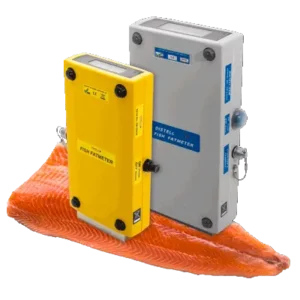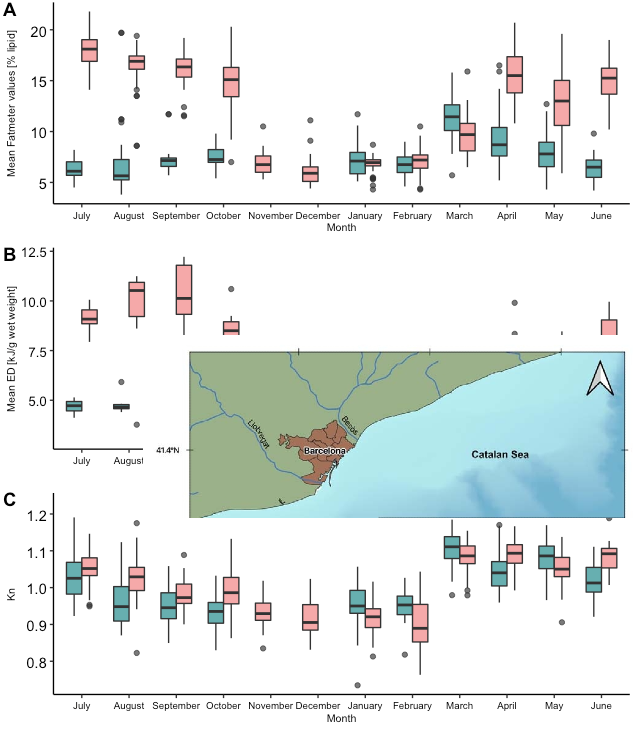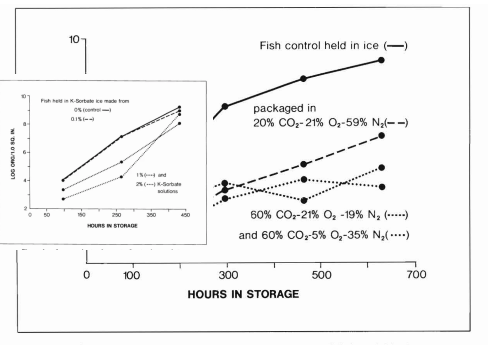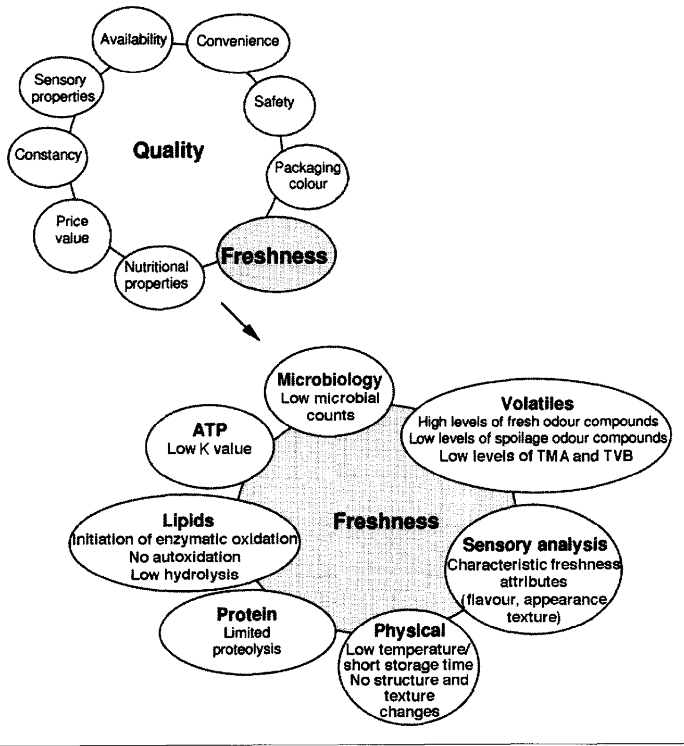Rapid estimation of lipid content of immature chum salmon in the ocean with a handheld microwave meter (Fish Fat Meter)
| Title | Rapid estimation of lipid content of immature chum salmon in the ocean with a handheld microwave meter |
| Written by | Toshiki Kaga, Shunpei Sato, Toru Nagasawa, Masa-aki Fukuwaka, Tetsuichi Nomura, Shigehiko Urawa |
| From | National Salmon Resources Center, Japan Hokkaido National Fisheries Research Institute, Japan National Research Institute of Aquaculture, Japan North Pacific Anadromous Fish Commission, Canada |
| Published | October 2009 |
| Fish Species | immature chum salmon (Oncorhynchus keta) |
| Key Words | chum salmon, microwave meter, total lipid content, rapid estimation |
What the research is about
This article explores the rapid estimation of lipid content in the muscle of immature chum salmon (Oncorhynchus keta) using a hand-held microwave meter, Fish Fat Meter. The study examines the efficacy of the Fish Fat Meter as a tool for this estimation and evaluates its potential to revolutionize the collection of data and improve the precision in physiological studies of high-seas chum salmon.
The Fish Fat Meter played a significant role in this study by providing a quick and efficient method to estimate the total lipid content in fish muscles. Its utilization offers a portable and non-invasive alternative to traditional chemical analyses, which are often complex, time-consuming, and require laboratory facilities.
The article addresses the challenges associated with determining lipid content in fish muscles through chemical analysis. This process requires the transportation of entire fish to a laboratory and subsequent homogenization, making it cumbersome and resource-intensive. The authors aimed to determine whether the Fish Fat Meter could provide accurate predictions for estimating lipid content in chum salmon and establish a standard protocol for rapid estimation in high-seas chum salmon.
By utilizing the Fish Fat Meter, the study successfully overcame the challenges posed by traditional chemical analysis methods. The meter’s ability to measure the attenuation of microwave energy in response to the water content in a sample allowed for a quick conversion to response values, enabling rapid estimation of lipid content in chum salmon muscle.
The benefits of using the Fish Fat Meter, as indicated in the article, include:
- Rapid Estimation: The hand-held microwave meter enables the examination of one fish in less than 30 seconds during high-seas surveys, resulting in significant time savings compared to traditional methods.
- Large Data Collection: The rapid estimation capabilities of the Fish Fat Meter enable researchers to collect a substantial amount of data, facilitating enhanced precision in physiological studies of high-seas chum salmon.
- Portability and Convenience: The hand-held nature of the Fish Fat Meter allows for easy transportation and on-site measurements, eliminating the need to transport fish specimens to a laboratory.
The Fish Fat Meter proves to be valuable in several ideal scenarios or use cases, including:
- High-Seas Surveys: The portability and efficiency of the Fish Fat Meter make it an excellent tool for conducting rapid lipid content estimations during high-seas surveys, where capturing and analyzing a large number of fish specimens quickly is crucial.
- Research Expeditions: The ability to measure lipid content on-site minimizes the dependence on laboratory facilities, making the Fish Fat Meter an ideal companion for research expeditions focusing on fish physiology and lipid analysis.
Research conclusion
The results from this article concludes that the microwave meter (Fish Fat Meter) can be used as an effective tool for the rapid estimation of total lipid contents in chum salmon. Microwave meter can estimate the water content of tissue accurately.
The Fish Fat Meter significantly contributes to the conclusions drawn in the article by providing a quick, portable, and non-invasive method for estimating lipid content in the muscle of immature chum salmon. This innovative tool offers advantages such as rapid estimation, large data collection capabilities, and portability, revolutionizing the traditional approach of chemical analyses.
The importance of the Fish Fat Meter in the context of lipid content estimation for immature chum and pink salmon in the ocean cannot be understated. Its utilization enables researchers to obtain precise measurements efficiently, facilitating advancements in physiological studies and contributing to a better understanding of the role of lipids and energy in the lives of carnivorous fish such as salmonids.
The results demonstrate that the strong relationship between the total lipid content of half body fillet and microwave meter (Fish Fat Meter) values. Unlike chemical analysis, the microwave meter (Fish Fat Meter) enables us to assess the total lipid content rapidly. It requires approximately 30 second per one fish for measuring at three positions. The microwave meter (Fish Fat Meter) can enable us to collect more number of data and increased data will permit increased precision in physiological studies.
Assurant Innovations take
The Fish Fat Meter is a great tool to measure lipid (fat) for Chum Salmon.
The article titled “Rapid Estimation of Lipid Content of Immature Chum and Pink Salmon in the Ocean with a Hand-held Microwave Meter” presents an opportunity to highlight the positive contributions of the Fish Fat Meter device to the study, as well as to address potential objections and skepticism from the audience.
The Fish Fat Meter device played a crucial role in this study by providing a rapid, accurate, and non-invasive method for estimating the lipid content of immature chum and pink salmon in the ocean. Through its measurement of microwave attenuation in response to water content, the Fish Fat Meter allowed researchers to obtain precise values for lipid content without the need for time-consuming and costly chemical analysis methods. This innovative technology considerably expedited the data collection process, enabling researchers to assess the lipid content of multiple fish in just 30 seconds per measurement at three positions.
The benefits of the Fish Fat Meter device, which would be of great interest to potential buyers in the fishing industry and research community, are numerous. First, its speed and efficiency significantly reduce operational time and associated costs, thereby enhancing productivity and profitability. By utilizing the Fish Fat Meter, professionals can obtain instant measurements and generate a larger volume of data, ultimately enabling increased precision in physiological studies and improving overall decision-making processes related to fish quality assessment and management.
In addressing potential objections or skepticism from the audience, it is important to acknowledge that the Fish Fat Meter represents a departure from traditional chemical analysis methods, which may raise concerns about its accuracy and reliability. However, it is crucial to emphasize that the article demonstrates a strong correlation between the measurements obtained from the Fish Fat Meter and those obtained through chemical analysis. Furthermore, multiple studies, including those on Chinook salmon, brook trout, and sockeye salmon, have successfully utilized the Fish Fat Meter, showcasing its effectiveness and broad applicability.
Another potential objection might involve uncertainties regarding the ease of use and operational complexity of the Fish Fat Meter device. In response, it is essential to highlight that the device has been designed to be user-friendly and portable, allowing for its convenient use in a variety of settings. The Fish Fat Meter requires minimal training, and its straightforward interface ensures a seamless experience for users, facilitating quick and accurate lipid content estimation.
It is also worth addressing concerns about the cost-effectiveness of adopting the Fish Fat Meter device. While the initial investment may require an upfront commitment, the long-term savings and efficiency gains justify its use. By minimizing the reliance on labor-intensive and time-consuming chemical analysis methods, the Fish Fat Meter enables cost savings, increased productivity, and enhanced decision-making capabilities.
The Fish Fat Meter device has made noteworthy contributions to the study highlighted in the article. Its ability to rapidly estimate lipid content in fish, deliver accurate measurements, and streamline data collection processes highlight its value for potential buyers in the fishing industry and research community. The Fish Fat Meter represents a cutting-edge innovation in fish quality assessment, promising enhanced efficiency, cost savings, and improved productivity.

Fish Fat Meter
To Purchase: Call or Email








